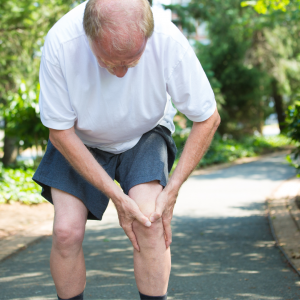Osteoarthritis (OA) of the knee is an all too common condition that affects many people, especially as age increases. A study published in the Lancet in 2020 reported that just under a quarter of people over the age of 40 have knee OA. Some of the main modifiable risk factors for the development and also the severity of knee OA are body weight and activity levels. While many people know that exercise is an important part of preventing and managing knee OA, we often get questions in centre about different exercises involving the knees and whether or not they will “damage” the knee further. Fortunately, a recent study into some common lower body exercises was able to answer this question.
Weight bearing exercises such as squats and lunges have been shown to be good exercise options to develop the strength of the leg muscles and assist in the coordination and control of the lower limbs which greatly assists balance. However many people with knee arthritis are told to “avoid” these exercises so as not to make their knee pain worse. A group of researchers from Australia recently studied the amount of force these exercises produced to the cartilage of the knee and compared this with the amount of force experienced by the knee with walking. Their results showed that while the knee muscles themselves generate greater forces during the squat and lunge exercises, the contact forces on the cartilage during these exercises were no different to what is experienced when walking. This is great news as it provides reassurance that these exercises do not negatively influence the progression of knee OA and have good potential to improve local muscle strength which has been shown to be reduced in people with knee OA.
So does this mean everyone should be doing squats and lunges to help with knee OA? While these are great exercises, there are a few considerations before adding them to your regular routine. The first consideration is how sensitive your knee is. Like many conditions, knee OA can be associated with episodes where the knee is more sensitive to loading and hence more painful. While squatting and lunging exercises won’t necessarily do any damage to the knee, exercising in pain and having some soreness afterwards can make you less likely to want to continue to exercise.
Secondly, you need to consider how flexible your hips and ankles are. Many people who develop knee OA and have not experienced a previous knee injury have mobility limitations in one or both of these joints that ultimately put more stress on the knee and may have contributed to the development of knee OA. The hip and the ankle joint are designed to move in a much greater range than the knee joint itself, and when they lose their mobility the knee commonly experiences more twisting as it tried to compensate.
A simple way to test your ankle mobility is through a knee to wall test. With your hips facing the wall, your front foot toes touching the wall and your foot staying flat on the ground (without shoes on), you should be able to bend your front knee over your ankle so that your knee touches the wall. If this is difficult to do or you cannot reach the wall, it is a good idea to try and increase your ankle movement before attempting a squat or a lunge.
Similarly, an easy way to test your hip mobility is to stand next to a chair so that there is one foot length (ie your foot length not an imperial foot measurement) between the side of your foot and the chair leg. With your legs under your hips and your hips pointing forward you should be able to turn the foot to touch the chair leg. As with the test above, if you are unable to touch the chair leg without your hips and body turning, you should aim to increase your hip mobility before adding the squat or lunge in.
If you do have any limitations in your hip or ankle mobility, some other exercise options that do not require as much mobility in these areas that train the same muscles groups as a squat or a lunge include straight leg raises either lying down or sitting, bridging exercises and chair sit to stand exercises. Alternatively, performing some hydrotherapy exercises can be a good starting point where the knee is experiencing an episode of increased sensitivity.

